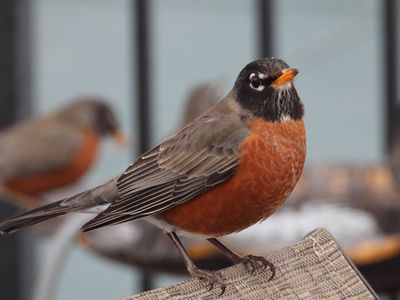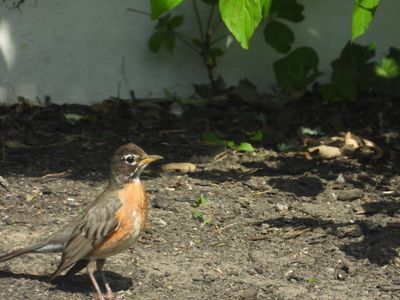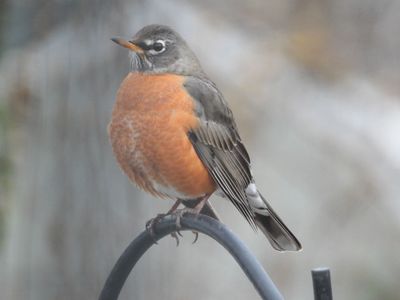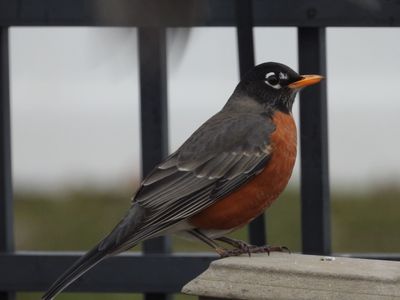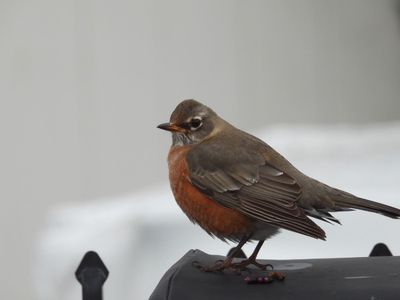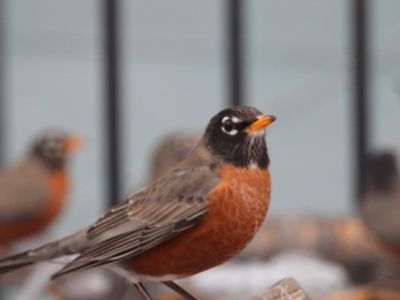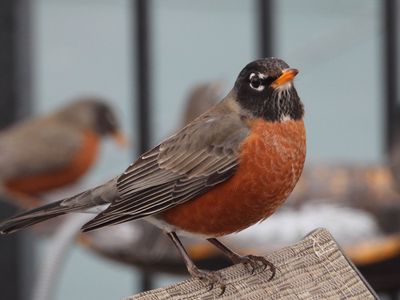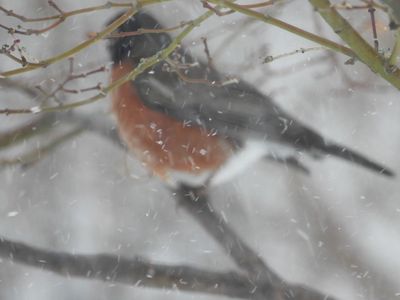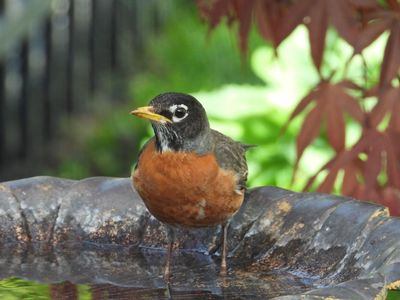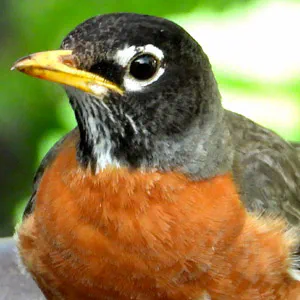
The American Robin (Turdus migratorius) is a migratory songbird of the thrush family.
It is widely distributed throughout North America, from Alaska and Canada southward to Mexico. Recognized by its orange or red breast and dark gray back and head, the American Robin is one of the most familiar and widespread birds in the continent, often seen foraging on lawns for earthworms, insects, and other invertebrates.
The American robin (Turdus migratorius) is a migratory songbird of the true thrush genus and Turdidae, the wider thrush family. It is named after the European robin because of its reddish-orange breast, though the two species are not closely related, with the European robin belonging to the Old World flycatcher family. The American robin is widely distributed throughout North America, wintering from southern birds to central Mexico and along the Pacific Coast. It is the state bird of Connecticut, Michigan, and Wisconsin.
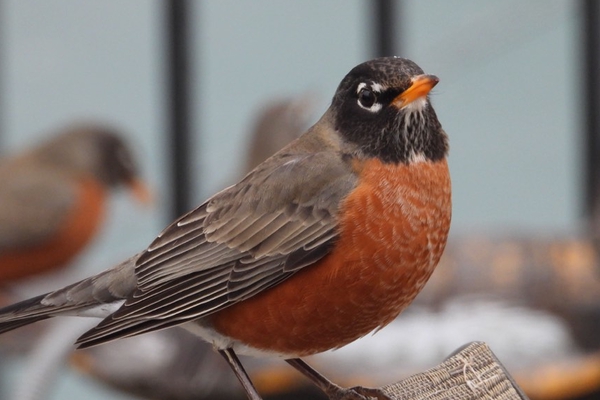
According to the Partners in Flight database (2019), the American robin is the most abundant bird in North America (with 370,000,000 individuals), ahead of red-winged blackbirds, introduced European starlings, mourning doves and house finches.
It has seven subspecies, but only one of them, the San Lucas robin (T. m. confinis) of Baja California Sur, is particularly distinctive, with pale gray-brown underparts.
The American robin is active mostly during the day and assembles in large flocks at night. Its diet consists of invertebrates (such as beetle grubs, earthworms, and caterpillars), fruits, and berries. It is one of the earliest bird species to lay its eggs, beginning to breed shortly after returning to its summer range from its winter range. The robin’s nest consists of long coarse grass, twigs, paper, and feathers, and is smeared with mud and often cushioned with grass or other soft materials. It is among the earliest birds to sing at dawn, and its song consists of several discrete units that are repeated.
The adult robin’s main predator is the domestic cat; other predators include hawks and snakes. When feeding in flocks, it can be vigilant, watching other birds for reactions to predators. Brown-headed cowbirds (Molothrus ater) lay their eggs in robin nests (see brood parasite), but the robins usually reject the egg.
American Robins are known for their beautiful singing, which consists of a series of melodious phrases repeated a few times, often heard during early morning and late evening. They play a significant role in many ecosystems, helping to control insect populations and disperse seeds through their diet, which also includes fruits and berries.
Robins are adaptable birds, making their homes in a variety of habitats, including forests, mountains, fields, gardens, and urban areas. They build their nests in trees or on buildings, often returning to the same territories each year.
The American Robin is not only admired for its cheerful song and presence but also holds cultural significance in many Native American myths and is a sign of spring and good fortune in various cultures.
Gallery
American Robin
- Domain - Eukaryota
- Kingdom - Animalia
- Phylum - Chordata
- Class - Aves
- Order - Passeriformes
- Family - Turdidae
- Genus - Turdus
- Species - T. migratorius
- #
